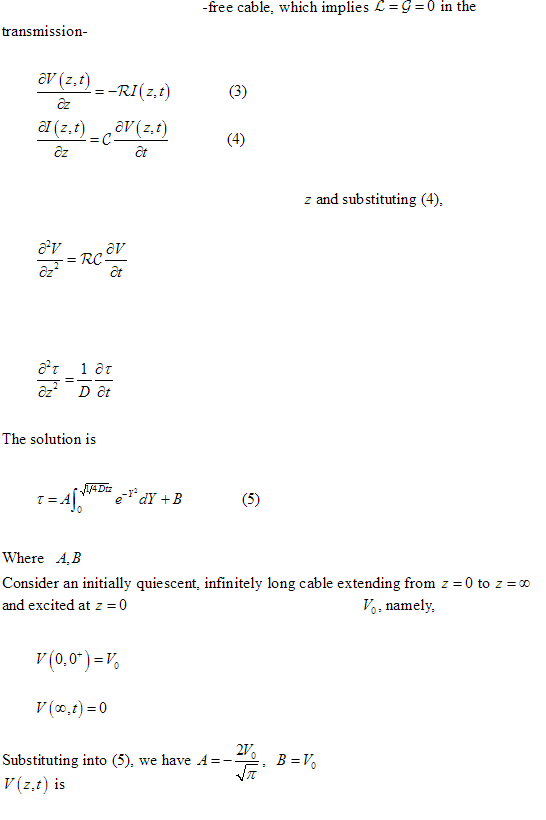Diffusion over Transmission Line
Consider the distributed equivalent circuit for a lossy transmission line.
Apply KCL and KVL to have
Consider a noninductive, leakage
line equations. Equations (1) and (2) reduce to
Taking the partial derivative of (3) with respect to
Which has the form of diffusion equation
are constants to be determined from boundary conditions.
by a constant voltage source of value
. Hence, the particular solution of


